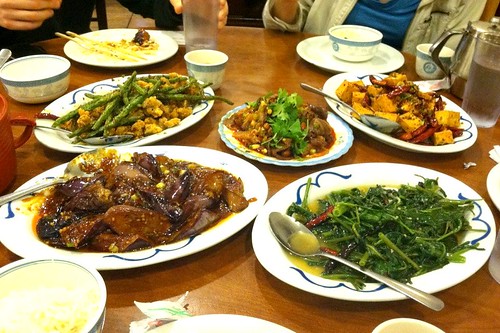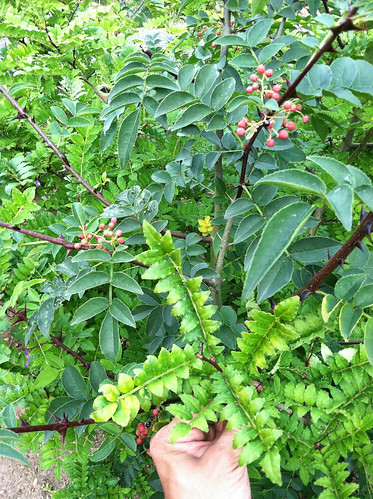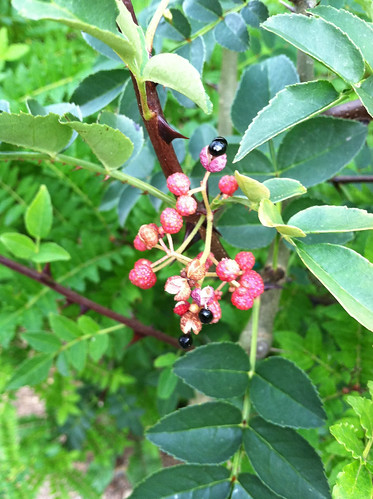
If there was one plant that would remind me fondly of my experiences in studying abroad in China, it would be the genus Zanthoxylum. :"Huājiāo" (花椒; literally "flower pepper") in Chinese or "sanshō" (山椒) in Japanese has thrived in my garden since I secured plants of two species shortly after I returned from China. They are now growing close to one another and producing an abundant crop of peppercorn husks and pungent foliage when crushed.
As a member of the citrus family (Rutaceae), all parts of the plant are scented when crushed, but it's the bright red peppercorns that pack the punch when it comes to tongue-numbing sensations that allow the spiciness of Sichuan/Szechuan cuisine to really come through.
There are several species that have earned the common name of "Sichuan Pepper Corn". Perhaps the most common in production is Z. piperitum, but I've also secured a seedling of Z. simulans from the University of Washington Medicinal Herb Garden.
At first, I thought I had two different forms of Z. piperitum, but the foliage and habit are very different.

On top of the photo is Z. simulans with larger, dark green leaves with fewer leaflets compared to Z. piperitum which has smaller leaves and more leaflets. It is also lighter in color and when you crush the leaves and smell both species, the Z. piperitum has a "sweeter" smell, while. Z. simulans is stronger and kind of harsh.
What I remember in Sichuan is actually Z. simulans. A classmate of mine was studying them as a commercial crop in a small village in the Liangshan Prefecture in SW Sichuan called Yangjuan. He tried to determine if the peppercorns would be a viable crop for the village as it thrived in the high elevation and somewhat arid conditions.
Here at Landwave, I actually grow the two species close together in the hopes that I'd get increased fruit production. It's been two years since I planted them together and this year, I'm having quite a crop! Z. piperitum has denser foliage ( I think in Japan it's the new growth and foliage they consume) and not as much fruit, but Z. simulans, though lanky and somewhat awkward in habit (due to my not so great pruning as it has gotten a bit large) is fruiting very well.

So, what you consume are the pinkish red husks. The black seeds are removed and it's these husks that are allowed to dry and used for cooking to create dishes like the ones above!
That looks so yummy - I want that eggplant now...I had never heard of the Sichuan pepper corn so thank you for that very educational post!
ReplyDeleteYou're very welcome! Glad someone learned something! hheeh. That eggplant dish is one of my favorites called "Yu Xiang Qiezi" which literally means "Fish Fragrant Eggplant". Doesn't sound all that delicious, but believe me it's very flavorful eggplant that almost melts in your mouth as it's sauteed with minced pork (or not if you want to keep it vegetarian) seasoned with a spicy broad bean paste, vinegar, soy sauce, garlic, ginger and a few of these awesome peppercorns!
ReplyDelete